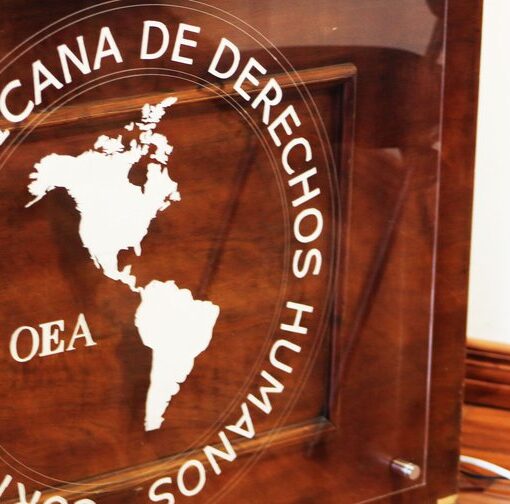This post is part of a new Climate Law Blog series, 100 Days of Trump 2.0, in which the Sabin Center offers reflections on the first hundred days of President Trump’s second term across a variety of climate-related topics. To read other posts from the series, which will roll out over the course of the next week, click here.
Amid the chaos and upheaval that has thus far defined the second Trump administration, one thing is crystal clear: the President of the United States is determined to undermine the Inflation Reduction Act (IRA). The IRA, which Congress passed and President Biden signed into law in 2022, contains at least 119 distinct climate change-related provisions to be implemented by sixteen federal agencies. Although the President has no power to repeal the IRA—that is up to Congress—the executive branch plays a key role in its implementation. To date, the administration’s interference with IRA implementation has had drastic implications for climate action, whether through laying off necessary agency staff and revoking IRA-related guidance, unlawfully freezing funding or, in some cases, terminating funding awards outright.
Drawing from the detailed account maintained at the IRA Tracker, this blog post offers some key updates regarding the status of the IRA’s implementation after 100 days of the second Trump administration. (The Sabin Center and the Environmental Defense Fund created the IRA Tracker after the IRA was enacted in 2022 to record actions taken by federal agencies to implement the law and relaunched the resource at the start of President Trump’s second term with added features to track rollbacks and litigation). Although many of the climate-related provisions of the IRA involve tax credits, this post focuses primarily on the IRA’s funding provisions as those are the ones over which the executive branch can exert greater influence, as it is currently seeking to demonstrate.
Funding Frozen, Awards Terminated
On January 20, 2025, President Trump issued Executive Order 14154, entitled Unleashing American Energy, directing all agencies to immediately stop disbursing funds appropriated by the IRA and Infrastructure Investment and Jobs Act of 2021 (IIJA), and to review the processes for issuing grants, loans, contracts, or any other financial disbursement of appropriated funds.
Shortly thereafter, the White House Office of Management and Budget (OMB) issued a memorandum to agency and department heads, Memorandum M-25-13, requiring agencies to temporarily pause all grant, loan, and financial assistance programs pending review. The memorandum directed that, while programs are under review, agencies “must temporarily pause all activities related to obligation or disbursement of all Federal financial assistance, and other relevant agency activities that may be implicated by the executive orders, including, but not limited to, financial assistance for … the green new deal,” an undefined phrase that can be understood to mean climate and environmental justice work, including as funded by the IRA.
The OMB memorandum was immediately challenged in multiple lawsuits, temporarily stayed by two federal district courts, and then rescinded. Despite these court orders preventing agencies from implementing the OMB freeze, many IRA awardees reported an inability to access their funding, a state of affairs which lasted for weeks after the memorandum had been issued and, for some awardees, still persists today. This may be due in part to the fact that the underlying Executive Order still stands, and in part to the government’s failure to comply with the court orders. Recent reports suggest that in many instances, finally, funds are once again flowing.
In addition to the blanket IRA funding freeze, the Trump administration has also targeted some individual IRA programs. Most notably, the Environmental Protection Agency (EPA) took the extraordinary step of terminating $20 billion in National Clean Investment Fund and Clean Communities Investment Accelerator grants. These were awarded under the IRA’s Greenhouse Gas Reduction Fund (GGRF), the largest and one of the most critical climate spending programs in the IRA. EPA has sought to justify the termination with baseless accusations of program-wide fraud and misalignment with current agency priorities. These terminations are now the subject of several lawsuits, as detailed in another recent blog post.
Beyond funding freezes and award terminations, various agencies have commenced audits and reviews of IRA programs and regulations (see, e.g., here, here, and here). Overall, the IRA Tracker has recorded 28 distinct actions to roll back implementation of the IRA since President Trump took office.
It’s worth noting that the administration has stated its commitment to honoring some IRA funding programs, particularly in cases where it is politically expedient to do so. For example, the USDA released $20 million in frozen awards made through the conservation programs funded by the IRA, stating that it will “honor contracts that were already made directly to farmers.” More detail on actions taken under the new administration can be found in the IRA Tracker.
Litigation Updates
As a result of actions taken to freeze or cancel IRA grants and other federal financial assistance, the first 100 days of Trump’s presidency has also brought sixteen lawsuits filed in federal courts, including:
- 6 lawsuits challenging the blanket IRA funding freeze under Executive Order 14154 and the OMB memorandum M-25-13, plus 2 appeals;
- 7 lawsuits challenging the termination of grants awarded under the GGRF program, plus 1 appeal; and
- 1 lawsuit challenging the termination of grants awarded under the IRA’s Thriving Communities Grantmaking Program.
More details with respect to these sixteen lawsuits can be found on the IRA Tracker’s Litigation page. Here we provide a current summary, and some early takeaways.
The State of Play
The day after OMB circulated Memorandum M-25-13, two major lawsuits were brought challenging it. These suits brought powerful but limited forms of injunctive relief. In State of New York v. Trump, in which 22 states plus the District of Columbia sued the administration for blocking funds to state agencies, a federal judge in the U.S. District Court for the District of Rhode Island issued a preliminary injunction preventing the administration from “pausing, freezing, blocking, canceling, suspending, terminating, or otherwise impeding the disbursement of appropriated federal funds to the States.” The injunction, which has been the subject of unsuccessful appeals by the Trump administration and successful motions to enforce by the states, is effective only with respect to the plaintiff states—not to other states or municipalities within them nor to any other federal awardee.
The second case was National Council of Nonprofits v. OMB, which has resulted in a preliminary injunction more broadly prohibiting the administration from “implementing, giving effect to, or reinstating under a different name the unilateral, non-individualized directives in OMB Memorandum M-25-13 with respect to the disbursement of federal funds.” The National Council of Nonprofits preliminary injunction applies to a larger set of federal awardees, including local governments and nonprofit groups, but it does not provide relief for grant terminations or the withholding of federal funds for which the relevant agency cites a reason other than a blanket funding freeze as contemplated in the OMB memo or the Unleashing American Energy Executive Order.
More recent cases challenge specific instances of withheld funding and grant termination, and these too have yielded injunctive relief. In Woonasquatucket River Watershed Council v. USDA, several nonprofit organizations challenged the suspension of their federal grants. The District of Rhode Island issued a nationwide preliminary injunction on April 15, 2025, ordering five federal agencies—the Departments of Energy (DOE), Housing and Urban Development (HUD), Agriculture (USDA) and Interior (DOI), and EPA—to “take immediate steps to resume the processing, disbursement, and payment of already-awarded funding appropriated under” the IRA (as well as the IIJA), and prohibited those agencies from “freezing , halting, or pausing on a non-individualized basis the processing and payment” of such funding. Another case, The Sustainability Institute v. Trump, was brought by nonprofit groups and local governments challenging withheld funding under EPA, USDA, DOE, and Department of Transportation (DOT) programs. Six local governments or local elected officials are party to that suit: Columbus, Ohio; Madison, Wisconsin; Nashville and Davidson County, Tennessee; New Haven, Connecticut; San Diego, California; and the mayor and city council of Baltimore, Maryland. Oral arguments on a motion for preliminary injunction were held on April 23, 2025, and a decision from the U.S. District Court for the District of South Carolina is expected imminently.
The IRA’s GGRF program termination has also been the subject of significant litigation. Several of the GGRF awardees and sub-awardees have sued EPA and its financial agent, Citibank, challenging the termination. These cases have been consolidated in the federal district court in Washington, D.C. There, the judge issued a temporary restraining order on March 18 that prevented Citibank from transferring grantee funds back to EPA. On April 15, the judge issued a preliminary injunction that directed Citibank to make certain reimbursements to the GGRF grantees. By the following day, however, the U.S. Court of Appeals for the District of Columbia had stayed parts of the preliminary injunction such that Citibank was no longer required to make reimbursements. For now, GGRF remains in a state of limbo—EPA may not terminate the program nor take back the billions of dollars appropriated for it, but neither may the grantees draw funds for their operations or to invest in projects. (In theory, the Woonasquatucket River Watershed Council injunction should require EPA to unfreeze the GGRF program as it does other IRA programs administered by the agency, but it does not appear to have done so.)
Early Takeaways
It’s relatively early in the litigation, still, but a few initial thoughts:
First, the lawsuits predominantly raise Administrative Procedure Act (APA) claims, arguing that agencies have acted arbitrarily and capriciously and not in accordance with the IRA and relevant regulations. Some plaintiffs have also raised constitutional arguments.
Second, plaintiffs across the board have been successful in securing temporary relief in the form of temporary restraining orders and preliminary injunctions. The particulars of the relief differ from case to case but, broadly, the government has been required to unfreeze accounts and prevented from giving effect to terminations while the litigation is ongoing. Compliance with some of the preliminary relief granted by the courts has been spotty, and federal agencies are increasingly seeking ways to suspend or terminate funding awards that arguably do not run afoul of any preliminary injunction, though their efforts may be unlawful for other reasons, in particular by doing so in ways that are not “non-individualized.”
Third, agencies have been quick to appeal preliminary injunctions against them, such as in State of New York v. Trump and Climate United Fund v. Citibank, which indicates that the federal government intends to pursue the litigation vigorously.
Fourth, in a number of grant termination lawsuits, both related and unrelated to the IRA, the government has raised an argument that the proper venue for challenges to grant terminations is the Court of Federal Claims, which hears claims for monetary damages against the United States. For example, in the GGRF cases, EPA argues that the termination of grants is a purely contractual issue and, therefore, belongs in the Court of Federal Claims. Plaintiffs counter that their claims arise under the APA and the Constitution, which means that a U.S. District Court is the proper venue.
Early on, it was unclear how important this argument would be, but it gained significant traction when the Supreme Court issued an emergency order in a case against the Department of Education. Although not directly considering the venue question, the Court went out of its way to opine on it, suggesting that the Court of Federal Claims is the proper venue. A few lower federal judges have differentiated the cases before them from the Department of Education case, allowing for continued proceedings in District Courts.
The venue issue will likely become central to the GGRF litigation. If plaintiffs were forced to bring their cases in the Court of Federal Claims, it would significantly limit the remedies available and would quite possibly prove fatal to the grantees’ projects. Remedies in the Court of Federal Claims include monetary damages but not injunctive relief. That means that, even if EPA were found to have inappropriately terminated an award agreement, the court could not order the agreement to be reinstated. It could only award the plaintiffs damages; the amount of damages would be set so as to compensate the plaintiffs for costs resulting from the breach of contract and would likely not amount to the full grant award.
As noted above, notwithstanding the Supreme Court’s ruling in the Department of Education case, some courts have held that other challenges to grant terminations may continue in District Courts. They have differentiated the cases they are hearing by noting the ways in which contractual relief is not sufficient. The GGRF cases are, too, distinguishable from the Department of Education case in important ways. This will be a critical issue to follow as the litigation moves forward.
What to Watch
As the status of the IRA’s implementation continues to evolve under President Trump, here are some thoughts on where his administration may go from here:
- The administration has attempted both sweeping and targeted attacks on IRA programs through the freezing and/or cancellation of grants and other federal financial assistance, many of which have been challenged in court. We expect that the administration will continue to vigorously defend its “non-individualized” funding award suspensions and terminations while seeking novel ways to freeze funding for individual awardees. Where an awardee has funding terminated or suspended, they may have a claim in federal court. But bringing such claims can be burdensome, especially for a smaller organization or local government, and the long timelines for litigation might result in some organizations running out of money before their claims are even heard.
- IRA awardees have scored some early wins in court, although the administration has already appealed some of those decisions to the Courts of Appeals, and there is a long road ahead in the litigation. In many instances, funds remain frozen despite this early injunctive relief. As more cases make their way to the Courts of Appeals, it remains to be seen how different Circuits will view the APA and—if it comes to the fore—the Impoundment Control Act, which limits how the executive branch may withhold funds appropriated by Congress.
- The administration has begun reviewing other IRA programs but, thus far, its activity has been less focused on repealing or revoking IRA regulations and guidance. We may see more of that when the dust settles on the funding-related attacks.
- Congress has used the Congressional Review Act to repeal at least one IRA regulation. Congress passed, and President Trump signed into law, a joint resolution of disapproval under the Congressional Review Act to void EPA’s final rule on methane waste emissions, which it promulgated pursuant to the requirements of the IRA. Notably, this does not alter the IRA itself and, therefore, does not remove the underlying requirement that EPA must collect a methane waste charge. It simply invalidates EPA’s previously issued regulation to implement that statutory requirement. Based on the time limitations imposed by the Congressional Review Act, we are already seeing a sharp decrease in congressional activity under it. It is unlikely that the Congressional Review Act will be used much more to void IRA regulations and the executive branch will, therefore, have to follow the processes required by administrative law to amend or repeal other IRA regulations.







